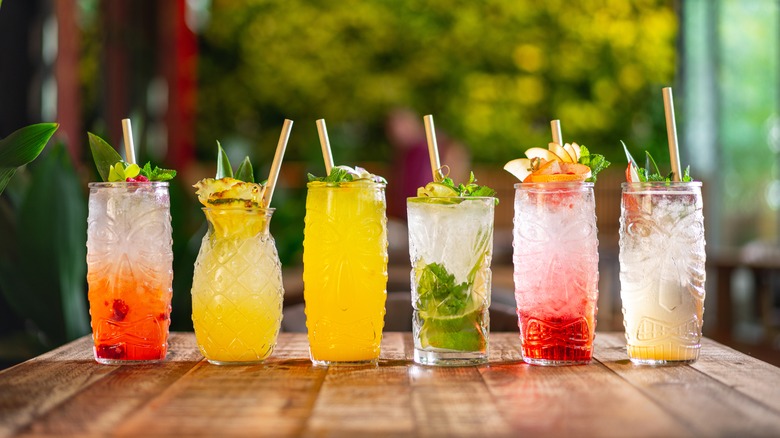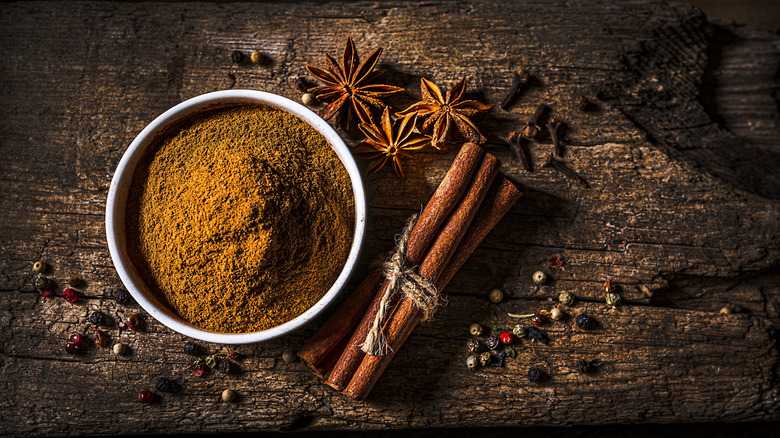Why Spices Are A Crucial Ingredient In Many Tiki Drinks
Tiki drinks are thought of as fruity cocktails that are perfect for summer weather, but that's overlooking the spices and complexity that underlies a deep and varied collection of recipes. The world of tiki drinks comes from a truly strange place as an American mish-mash of different tropical cultures and foods that was reshaped into something unique and nontraditional.
The early developers of tiki, like "Don the Beachcomber" Beach and "Trader Vic" Bergeron, certainly took inspiration and borrowed liberally from Caribbean cocktail culture, but almost every tiki drink was a wholly new invention, and so were the rules for making them. One of the biggest traditions that developed was something that anyone who has dabbled in tiki cocktail-making immediately notices: the long ingredient lists.
That's what is so overlooked in the worst versions of tiki. The original cocktails were not syrupy sweet despite the juice, they were incredibly complex. Layering flavors like rum, spices, bitters, and liqueurs came out of the experimentation and creativity that produced many of the original tiki drinks. Just look at the Beachcomber's classic drink, the zombie. There are 11(!) ingredients, including four rums and multiple juices. There are also two spice mix-ins: Falernum and a cinnamon syrup, which was one of the Beachcomber's signatures. Those spices aren't the main flavors, but that add essential depth and nuance to what would otherwise be very sweet drinks. It also helps that many of these flavors were native to the warm weather regions the tiki pioneers were drawing from.
Spices from tropical regions helped add complexity to sweet tiki cocktails
Don the Beachcomber had several secret spice mixes that were essential to a lot of his drinks, with Don's Spice #4 and #2 being the biggest. His #2 spice mix is a combination of vanilla and allspice dram. Allspice is an ingredient native to the Caribbean that has been added to rum drinks by locals for generations, especially in Jamaica. Another popular ingredient in tiki drinks is falernum, used in cocktails like the three dots and a dash, where it gets paired with allspice dram. Falernum can be dated all the way back to Barbados in the 18th century, where, like allspice, it was used to add a kick to alcoholic punches. Falernum's base is lime and sugar, those essential Caribbean rum companions, but it's set apart by the addition of warm spices like cloves, nutmeg, and ginger. By adding spices to cocktails, tiki bartenders were chasing the same flavors as the traditional punches and cocktails that inspired them.
There was one other thing spices helped with for tiki bars: competition. Because so many tiki drinks were new inventions, guarding the secret recipes was essential in maintaining an edge over your rivals. Both Beachcomber and Bergeron fought over who invented the mai tai for example. Secret spice mixtures made it hard for copycats to get the exact flavors of your drink right and steal your business. With tiki, tradition, invention, and good old American business competition all play a part.

